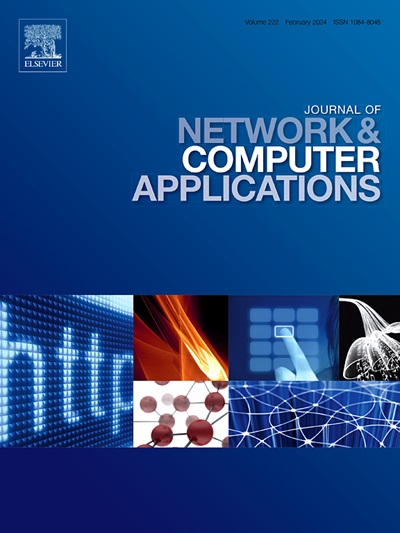基于多智能体强化学习的无线网状网络动态自协调拓扑优化
IF 8
2区 计算机科学
Q1 COMPUTER SCIENCE, HARDWARE & ARCHITECTURE
引用次数: 0
摘要
无线网状网络(WMN)技术增强了无线通信的覆盖范围,增加了端到端(E2E)延迟。WMNs的时延受各种网络拓扑结构的影响,而网络拓扑结构又受传输功率因素的影响。由于wmn的动态性,传统的离线拓扑优化方法是无效的。提出了一种基于强化学习(RL)的动态协同优化方法,以最小化wmn的端到端延迟和功耗。首先,我们开发了一个模拟现实世界通信环境的数值模型。接下来,我们根据这种环境设计一个基线和奖励函数。我们提出了一种新的动态自协调拓扑优化算法,以解决与高维状态-动作空间相关的挑战以及多终端设备之间协调动作的需求。该算法通过利用终端代理的协调信号和多种优化策略,实现代理的自动协调。实验和仿真结果表明,该算法有效地降低了端到端延迟和设备功耗。本文章由计算机程序翻译,如有差异,请以英文原文为准。
Multi-agent reinforcement learning based dynamic self-coordinated topology optimization for wireless mesh networks
Wireless mesh network (WMN) technology enhances wireless communication coverage and increases end-to-end (E2E) delay. The delay in WMNs is influenced by various mesh topologies, which are shaped by transmission power factors. Due to the dynamic nature of WMNs, conventional offline topology optimization methods are ineffective. This paper presents a reinforcement learning (RL)-based dynamic collaborative optimization method to minimize E2E delay and power consumption in WMNs. First, we develop a numerical model that simulates real-world communication environments. Next, we design a baseline and a reward function tailored to this environment. We propose a novel dynamic self-coordinated topology optimization algorithm to address the challenges associated with high-dimensional state–action spaces and the need for coordinated actions among multiple terminal devices. By leveraging coordination signals from terminal agents and multiple optimization strategies, the algorithm enables automatic agent coordination. Experimental results and real-world simulations demonstrate that the proposed algorithm effectively reduces both E2E delay and device power consumption.
求助全文
通过发布文献求助,成功后即可免费获取论文全文。
去求助
来源期刊

Journal of Network and Computer Applications
工程技术-计算机:跨学科应用
CiteScore
21.50
自引率
3.40%
发文量
142
审稿时长
37 days
期刊介绍:
The Journal of Network and Computer Applications welcomes research contributions, surveys, and notes in all areas relating to computer networks and applications thereof. Sample topics include new design techniques, interesting or novel applications, components or standards; computer networks with tools such as WWW; emerging standards for internet protocols; Wireless networks; Mobile Computing; emerging computing models such as cloud computing, grid computing; applications of networked systems for remote collaboration and telemedicine, etc. The journal is abstracted and indexed in Scopus, Engineering Index, Web of Science, Science Citation Index Expanded and INSPEC.
 求助内容:
求助内容: 应助结果提醒方式:
应助结果提醒方式:


